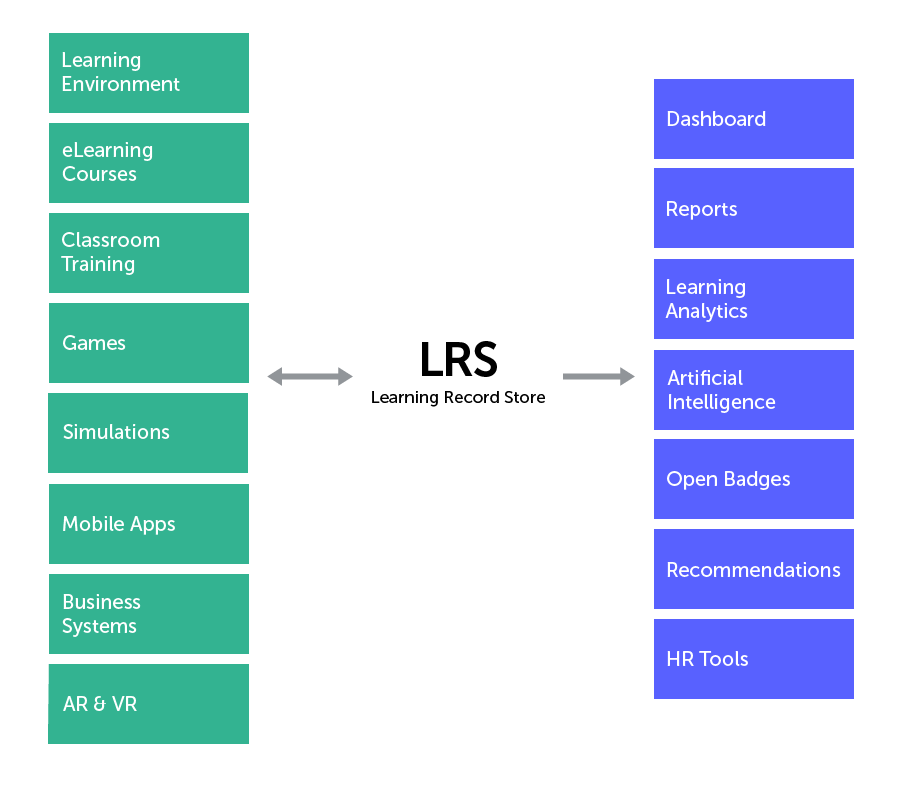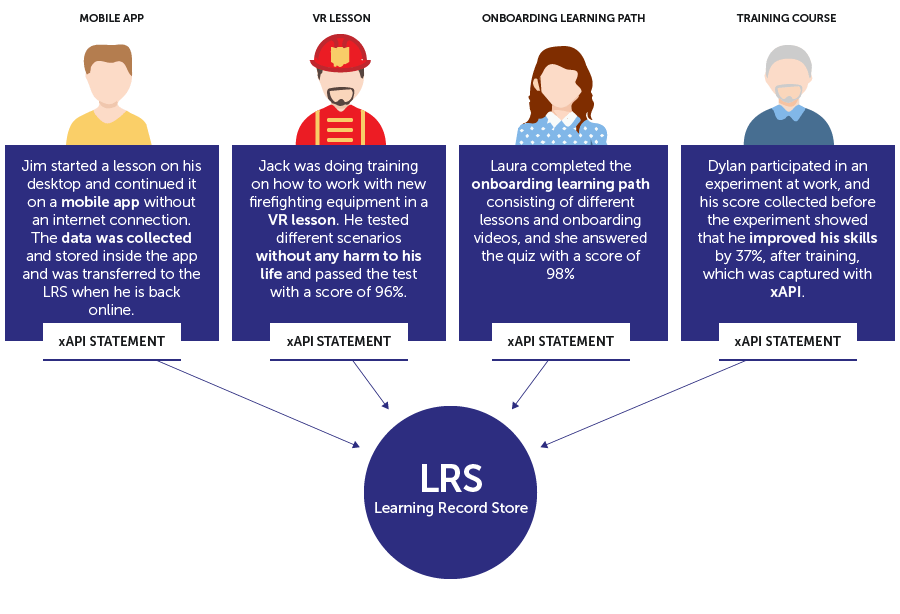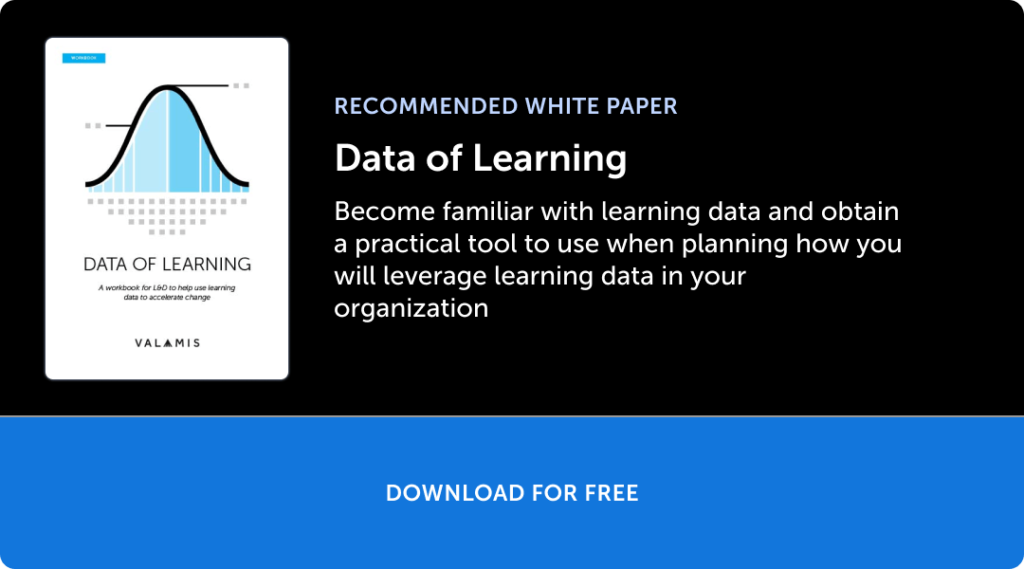In this article, we will take an in-depth look at the xAPI standard and its benefits. You will learn about how xAPI tracks, stores, and shares the learning experiences of users across different platforms and contexts. Developed by the US Department of Defense-funded ADL in collaboration with Rustici Software and the SCORM community, xAPI enables us to better understand user learning by tracking it on multiple devices and in various scenarios. We will also explore the benefits of xAPI, such as better data capture, integration, and transfer, the ability to connect learning and performance, insights about customers, and improved learning assets. We will delve into how xAPI works through learning activities, providers, statements, and the Learning Record Store, and we will see how xAPI can be used with virtual reality to enhance training effectiveness. To provide more context, we will also discuss the differences between xAPI, SCORM, AICC, and other eLearning specifications.
Understanding the xAPI Standard and Its Benefits
xAPI is a standard that tracks, stores, and shares the learning experiences of users across platforms and contexts. Developed by the US Department of Defense-funded Advanced Distributed Learning (ADL) in collaboration with Rustici Software and the SCORM community, xAPI allows for better understanding of user learning by tracking learning on multiple devices and in various scenarios.

Introduction to xAPI
xAPI, also known as “Tin Can API,” is a powerful standard that goes beyond the traditional eLearning specifications like SCORM and AICC. While SCORM and AICC are focused on tracking and reporting within a specific Learning Management System (LMS), xAPI provides a more comprehensive approach to tracking and analyzing learning experiences across different platforms and scenarios.

Development and Collaboration
The development of xAPI was a collaborative effort between the US Department of Defense-funded ADL, Rustici Software, and the SCORM community. With the goal of overcoming the limitations of previous eLearning specifications, these organizations came together to create a standard that is more flexible, versatile, and adaptable to the modern learning landscape.

Tracking Learning Across Platforms
One of the key advantages of xAPI is its ability to track learning experiences across different platforms and devices. Whether a learner is using a desktop computer, a mobile device, or even an offline learning solution, xAPI can capture and record their learning activities. This flexibility allows organizations to gain a holistic view of a learner’s progress and provides valuable insights into their learning preferences and behaviors.

Benefits of xAPI
The benefits of xAPI are wide-ranging and have a significant impact on the effectiveness of eLearning. Here are some of the key advantages of using xAPI:
Better Data Capture, Integration, and Transfer
xAPI allows for the capture of data at a granular level, enabling organizations to collect detailed information about learner behaviors, interactions, and achievements. This rich data can then be integrated with other systems and tools, such as learning analytics platforms or talent management systems, to provide a more comprehensive view of a learner’s progress.
Furthermore, xAPI facilitates the transfer of learning data between different applications and platforms, making it easier to share and analyze learning experiences across the organization. This seamless transfer of data enhances the efficiency and effectiveness of eLearning initiatives.
Connecting Learning and Performance
By tracking learning activities and linking them to job performance, xAPI enables organizations to measure the impact of learning on employee performance. This alignment between learning and performance allows organizations to identify gaps in knowledge or skills and design targeted training interventions to address them. As a result, organizations can improve both individual and organizational performance through strategic learning initiatives.
Insights about Customers
Another significant benefit of xAPI is the ability to gain valuable insights about customers. By tracking user behaviors and preferences, organizations can better understand their customers and customize their learning experiences accordingly. This personalized approach to learning enhances user engagement and improves the overall effectiveness of training programs.
Improved Learning Assets
xAPI helps organizations identify gaps in learning resources and optimize content and delivery. By analyzing the data captured through xAPI, organizations can gain insights into the effectiveness of their learning materials and make informed decisions regarding their development and improvement. This constant evaluation and iteration lead to the creation of high-quality learning assets that better meet the needs of learners.
Secure and Structured Data
xAPI ensures the security and structure of learning data by using a Learning Record Store (LRS) as a central repository for storing and accessing data. The LRS acts as a secure database that keeps track of all learning activities and allows organizations to manage and analyze the data in a centralized manner. This structured approach to data management enhances data security, privacy, and accessibility.

Enhancing Training Effectiveness with VR
One of the emerging trends in eLearning is the use of virtual reality (VR) to create immersive learning experiences. xAPI can be seamlessly integrated with VR technologies to enhance training effectiveness. By tracking and analyzing learning experiences in VR environments, organizations can gain a deeper understanding of learner engagement and performance. This data-driven approach to VR training allows organizations to optimize their VR learning assets and improve the overall effectiveness of their training programs.
In conclusion, xAPI is a powerful standard that revolutionizes how organizations track, store, and share learning experiences. With its benefits of better data capture, integration, and transfer, the ability to connect learning and performance, insights about customers, improved learning assets, and secure and structured data, xAPI empowers organizations to unlock the full potential of eLearning. By implementing xAPI, organizations can create personalized and impactful learning experiences that drive individual and organizational success in the ever-evolving digital age.




